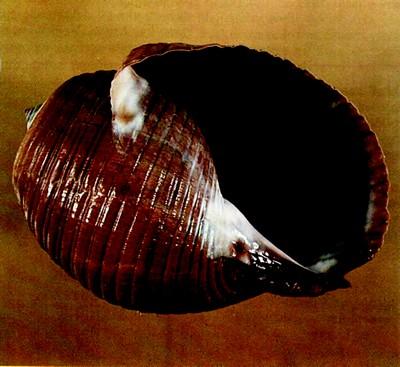Protected bivalves of the Istrian seabed
Puž bačvaš - The Giant Tun
 Due to its round and inflated shape and thin shell this sea snail is considered very fragile.
Due to its round and inflated shape and thin shell this sea snail is considered very fragile.
The giant or helmet tun is a species of marine gastropod mollusc in the family Tunicae, also known as tun shells. The species was named Tonna galea and Dolium galea by Linné (1758). The sea snail's shell has 5 partial spiral whorls with circular ridges, the last whorl being significantly larger. The aperture is also very large and has no covering. The tun can reach a maximum length of 30 cm and weigh up to 1.5 kg. It is greyish-yellow in colour, while the aperture is brownish, although rarely, some specimens are known to have brown colouring on their exterior as well.
It can be found in the entire Adriatic Sea but is very rare in the northern part. It lives not far off the coast at a depth of 10 to 150 m mostly in sea beds that are muddy or sandy.
Due to the giant tun's predatory nature, its habitat is the habitat of its prey. It feeds on other snails, bivalves, sea cucumbers, sea urchins and other minuscule marine life. The giant tun uses the acidic excretion of its salivary glands to bore holes thorough the shells of other snails, enabling it to feed on the soft inner contents. At night it goes looking for its prey by crawling along the sea floor but spends the day buried in soft mud. It spawns from August to October.







